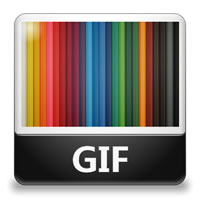Difference between JPEG and GIF
Key difference: JPEG stands for Joint Photographic Expert Group. The file name for a JPEG image is .jpg or .jpeg. JPEG is the most commonly used format for photographs. GIF stands for Graphics Interchange Format. The filename used for a GIF file is .gif or .GIF. GIF is a format mainly used for graphic images.
 Both JPEG and GIF are file format for storing digital images. The two formats are similar; however they do differ in the manner that they are stored and used. The main difference between the two is that GIF is effectively used for graphics, while JPEG is only used for digital photographs.
Both JPEG and GIF are file format for storing digital images. The two formats are similar; however they do differ in the manner that they are stored and used. The main difference between the two is that GIF is effectively used for graphics, while JPEG is only used for digital photographs.
JPEG stands for Joint Photographic Expert Group. The file name for a JPEG image is .jpg or .jpeg. JPEG is the most commonly used format for photographs. It is specifically good for color photographs or for images with many blends or gradients. However, it is not the best with sharp edges and might lead to a little blurring. This is mainly because JPEG is a method of lossy compression for digital photography.
This means that while saving the image in a JPEG format, there is a slight loss of quality due to compression. Hence, JPEG is not the greatest format in case one needs to keep making numerous edits and re-saves to the image. As with each re-save there a slight loss of quality due to compression. Still, if one only makes a few edits and the image is saved in a high quality format, the slight loss of quality due to compression is mainly negligible. An advantage to using the JPEG format is that due to compression, a JPEG image will take up a few MB of data.
Due to the popularity of JPG, it is also accepted in most if not in all programs. It is quite popular for web hosting of images, for amateur and average photographers, digital cameras, etc. This is mainly due to the fact that high quality images can be saved using less space.
 GIF stands for Graphics Interchange Format. The filename used for a GIF file is .gif or .GIF. GIF is a format mainly used for graphic images. It is a raster graphics format, essentially a bitmap image. The term bitmap essentially means a map of bits or specifically a ‘spatially mapped array of bits’. The term bitmap is rooted in computer programming terminology. A bitmap images uses different colored pixels, which are arranged in a manner to display an image. Examples of bitmap images include .png, .psd, .jpg, .gif, .tif, or .bmp.
GIF stands for Graphics Interchange Format. The filename used for a GIF file is .gif or .GIF. GIF is a format mainly used for graphic images. It is a raster graphics format, essentially a bitmap image. The term bitmap essentially means a map of bits or specifically a ‘spatially mapped array of bits’. The term bitmap is rooted in computer programming terminology. A bitmap images uses different colored pixels, which are arranged in a manner to display an image. Examples of bitmap images include .png, .psd, .jpg, .gif, .tif, or .bmp.
The GIF was first introduced in 1987 and is still one of the popularly used formats on webpages. However, its popularity has been decreasing lately, especially after the introduction of PNG. PNG aimed to be an improvement over GIF and hoped to address the limitations of the older format. Nonetheless, PNG has not been able to usurp GIF’s position in animation, as PNG like most other formats, including JPEG, does not support animation.
GIF, on the other hand, supports up to 8 bits per pixel, or 256 colors. This is a very limited range of colors, and as such is generally not used for photographs. Formats such as JPEG can support up to 16.7 million colors, which allows JPEG to give a more accurate representation of real life. Instead, GIF uses similar colored pixels close together in an attempt to trick the eye.
GIF is a lossless compression, which means that all the data on the image is stored when the image is compressed, i.e. there is no change in resolution. However, this also means that a same image will end up taking more data space as a GIF file than say a JPEG image. GIF uses the Lempel–Ziv–Welch compression, also known as LZW compression.
Image Courtesy: iconfinder.com, softicons.com









Add new comment